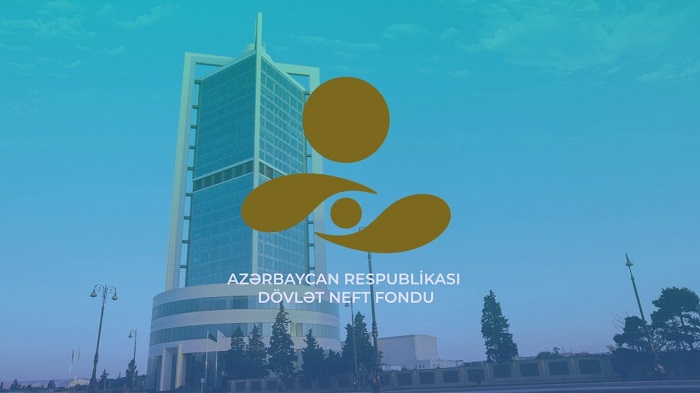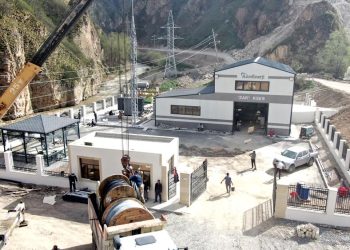Difficulties with the Nabucco pipeline project to bring gas out of the Caspian into the European Union contributed to a delay upstream, Azerbaijan’s energy minister Natig Aliev told NGE in an interview.
 The project, thought up in 2003, enjoyed the support of the European Union – and even of the US – for whom it represented a symbolic reduction of Russia’s dominance in the bloc’s energy sector.
The project, thought up in 2003, enjoyed the support of the European Union – and even of the US – for whom it represented a symbolic reduction of Russia’s dominance in the bloc’s energy sector.
“The consortium for Shah Deniz gas field’s second phase (SD2) started developing the project in 2007 and, based on the approved agreement between Azerbaijani government and the operator of Shah Deniz (SD), the gas production at SD2 and exports towards EU should have started in 2011 and 2012 respectively, but it was postponed to 2020 owing to EU policies. It means capital lost for both consortium and Azerbaijan. Imagine if we had started exporting gas to EU with high prices (since 2011),” Aliev told Ilham Shaban, NGE’s expert on Caspian region energy issues.
Coming to Nabucco and the Southern Gas Corridor (SGC), he said that unfortunately the structure of the Nabucco consortium was fundamentally wrong, with each company having equal shares and, as a commercially-driven entity, unwilling to cooperate with governments.
In fact, the shareholders of Nabucco, which was formulated in 2003 with no gas source announced, were typically state-owned, or mostly state-owned, incumbents. Their aim was to bring gas from Iran, Iraq, Russia and the Caspian region. This later narrowed down to the Caspian. Its shareholders included Austrian OMV, Bulgarian BEH, Romanian Transgaz and Hungarian FTSZ. The one purely commercial participant was Germany’s RWE, although it did not stay the course.
“The Shah Deniz consortium had spent $1bn in SD2 by 2011, but there was no clarity over Nabucco. That year there was more good news: after the first exploration well, France’s giant Total estimated that the reserves of the offshore Absheron gas field were around 350bn m3,” Aliev said.
“By that point there was no way back. Therefore, the Trans-Anatolian Natural Gas Pipeline (Tanap) emerged in 2011. The South Caucasus Pipeline Expansion Project (SCPX) – including two gas compressor stations – was part of SD2. The only unresolved issue was the route of delivering gas from Turkey’s western borders to EU: Nabucco West [which was Nabucco minus the Turkish section]; or Trans Adriatic Pipeline (TAP). Finally, TAP was chosen and a 3500-km SGC emerged.”
– It seems SGC is open to intake other countries’ gas additional to SD2 to transit EU. Is it?
– The project is designed to export SD2 gas and Azerbaijani gas is its major source. During the next decade, the Absheron gas field is expected to be started and other fields also developed. Azerbaijan’s gas reserves are quite enough to fill SGC, but it is open to other states’ reserves as well.
 We have good experience in this sphere. We started the Baku-Tbilisi-Ceyhan (BTC) pipeline to transit Azeri oil, but within a few years of the project’s start-up in 2006, it began shipping oil from Kazakhstan and Turkmenistan. We should adopt that approach for the SGC.
We have good experience in this sphere. We started the Baku-Tbilisi-Ceyhan (BTC) pipeline to transit Azeri oil, but within a few years of the project’s start-up in 2006, it began shipping oil from Kazakhstan and Turkmenistan. We should adopt that approach for the SGC.
– Some experts estimate that, for instance Gazprom’s transit projects make more sense from a political than an economic standpoint. What about the SGC?
– That’s an interesting question, especially the first part of this question – one could talk for a long time about that.
But notice that we spent 18 months evaluating the economics of the rival routes: Nabucco West or TAP. Coming to gas projects, it’s impossible to start an upstream project without transit infrastructure. Then SD2, which would cost $25bn, was signed in 2013, including SCPX (construction of 380 km new pipelines inside Azerbaijan) and installing two compressor stations in Georgia, while there are several rivals like SGC in supplying EU with gas.
Supposing we had taken a “waiting position” and didn’t sign the Tanap agreement with Turkey in 2011, then we wouldn’t be in a position to choose TAP by late 2013, about six months before plunging oil prices led to cutting oil and gas projects expenditures significantly during 2015 and 2016.
Had we waited any longer we would most likely have had to wait until oil prices rose again. We seized the opportunity. I can say right now that both SD2 and SGC are intended to be totally beneficial for all, especially Azerbaijan and the consortium as well as EU.
 Notice, coming to the costs and income of all the different elements – SCPX, Tanap and TAP – Azerbaijan’s gas is still profitable. Let me re-confirm that SGC is not political, but totally economic.
Notice, coming to the costs and income of all the different elements – SCPX, Tanap and TAP – Azerbaijan’s gas is still profitable. Let me re-confirm that SGC is not political, but totally economic.
– Can you explain when the revenues of SGC will exceed the expenditures?
– Let me say at the outset that the involved companies in these projects have their own estimates and there exist different variants. Azerbaijan eyes Shah Deniz, Tanap and TAP as a united project, because subtracting one of them nullifies the whole. SD2’s capex is estimated at $20bn and SGC’s at $25bn. We would start gas export to Turkey (from SD2) in 2018 and to EU in 2020.
Notice that the revenues of SD2 begin before gas flows to the EU from SD2. Based on the production-sharing contract, some of the costs will be clawed back annually from the produced gas until 2020. On the other hand, alongside the 16bn m3/yr of natural gas, there are more than 29mn barrels/yr of gas condensate from SD2. This will be shipped through BTC. The natural gas and gas condensate production level of SD1 is about 10bn m3 and 16.4mn barrels annually.
The revenues of SD2 and SGC would exceed the expenditures by 2028-2030 based on our calculation and expected oil and gas prices, while SGC is projected to remain active for 50-60 years.
– Lets look at Tanap. What’s the latest there?
– There is good news. Once, we contracted to build Tanap in 2013, capex was estimated to stand at $11.7bn, but currently the figure is $9.2bn, namely $2.5bn less than 3 years ago owing to declining the materials and service costs.
For now, about 938 km pipes have been produced, of which 720 km have been delivered to be construction area and 281 km have been welded. The length of Tanap is 1,848 km, comprising a 56-in pipeline from Erdahan-Eskishehir (1,334 km) and 476 km of 48-in and two pipelines, each of 36-in and 19 km long, which will pass through Dardanelles. Currently SD2 is 66% complete and SCPX is 33% complete.
– Recently, it seems negotiations over Trans-Caspian pipeline have been revived. The age of this project is greater than Nabucco in fact, without any concerete decision so far. How do you estimate the events around this project?
Of course, the Trans-Caspian pipeline idea dates back nearly 20 years while Nabucco failed after 10 years in 2013. Notice that the idea of this project came from Turkmenistan at first, because Russia was purchasing Turkmen gas very cheaply and after Turkmenistan and Turkey signed a 10bn m³/yr gas sales agreement in 1999.
After that, Russia paid more for Turkmen gas. Then Turkmenistan started gas exports to Iran and China, while the agreement for realization of Turkmenistan-Afghanistan-Pakistan-India (Tapi) pipeline was signed recently. Ashgabad did its best to diversify its exports.
For about 20 years the Trans-Caspian pipeline project was a live issue. Turkmenistan’s unusual aspect is that it never wants to become involved in projects abroad and undertake the risks. It only takes responsibility for delivering the gas to its borders. Coming to the Trans-Caspian project, it should change its traditional approach. However, Turkmenistan always takes part in negotiations, initiated by the west.
– Recently the vice president of the European Commission Maros Sefcovic said Trans-Caspian pipeline was negotiated in Istanbul in 2016. Can you please explain more about the details?
– The meeting you mention was held on January 28 at an expert level. During the meeting, alongside EU, Azerbaijan, Turkmenistan, Georgia and Turkey’s representatives took part, but without any specific decision.
During the meeting the ways of transiting Turkmen gas towards the west were discussed, specifically around two options. One of them was Trans-Caspian pipeline and another was about the transiting of foreign companies’ own gas share in Turkmen fields in the future through Azerbaijan towards the EU. Of course, both of the options are an interesting matter for discussion and may eventually come about.
Thank you very much, Mr Aliev
Ilham Shaban











